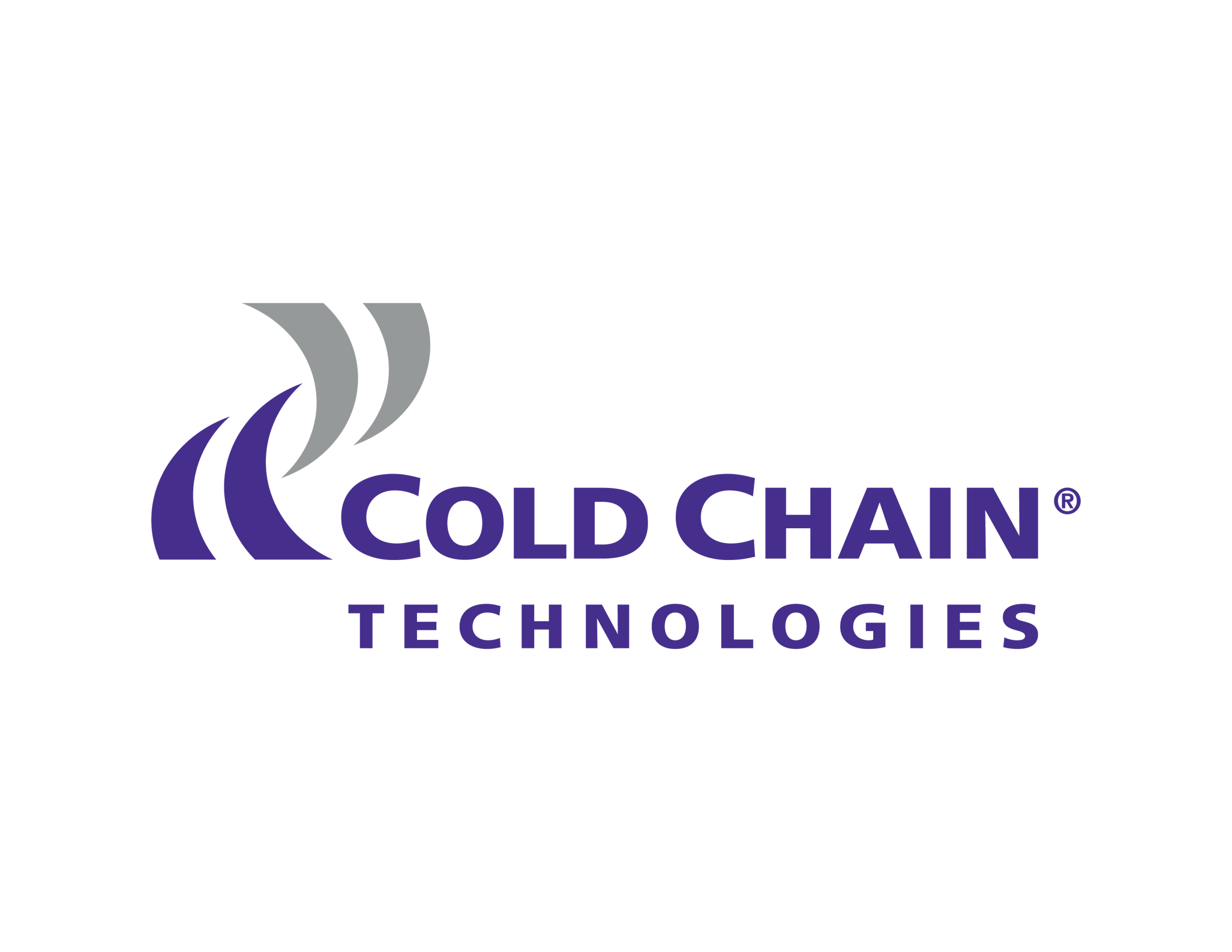Answers to your questions about conductive heat transfer and protecting your temperature-sensitive goods
Conductive heat transfer is the transfer of heat between two objects in close physical contact. The rate of this heat transfer is determined by the proximity of the objects, the temperature differences between the objects, and the conductive properties of these objects.
With conductive heat transfer or conduction heat transfer, heat moves from the warmer object to the cooler object. Any object can transfer heat to another object.
These examples of conductive heat transfer illustrate how heat transfer works even in extreme environments between animate and inanimate objects:
- Penguins can reduce heat conduction from their feet to snow by standing on their heels and using tail feathers as a third point of a tripod to stabilize the posture. Because tail feathers have much lower heat conductivity than the feet, reducing the area of contact between the feet and the snow greatly reduces the heat loss to the environment.
- Reptiles can press their body against a warm rock in order to gain heat or lift themselves from the cold substrate, thereby reducing heat loss.
For your temperature-sensitive products, the same conductive heat transfer process occurs.
Think about how you package your vaccines, meat, fruits and vegetables, paint, or flowers and what they come in contact with inside the packaging – this impacts the temperature, safety, and viability of your products.
Ultimately, you cannot beat physics. Insulation does not prevent heat from entering packaging, it simply slows the heat transfer process. And this is why you need to be using the right type of passive thermal packaging solution for your temperature-sensitive products.
Matching the unique properties of your products with the right thermal packaging solution is critical to maintaining the cold chain from packaging and shipping through to delivery.
Conduction, Convection, Radiation, and Thermal Packaging Solutions
While we don’t want to get too deep into physics and chemistry here, it’s important you know the basics of conduction, convection, and radiation and how this affects your thermal packaging solutions.
- Conduction: heat transfer happens when objects are in direct contact with each other. For example, a package of frozen fruit left in a metal grocery cart on a summer day absorbs the heat from the metal cart, ultimately impacting the temperature and properties of the fruit.
- Convection: heat transfer occurs when a fluid flows over an object. Within the cold supply chain, this fluid is typically air, and the rate of heat transfer is based on the speed of the air movement. For example, when a box of vaccines is left in a room with an open window, warm air may enter the room, slowly but surely changing the temperature of the vaccines. This temperature change is exacerbated if there is a fan in the room or if the room is a high traffic area with the door opening and closing frequently.
- Radiation: photons or electromagnetic waves cause objects to warm and heat. Think of the sun and how it warms you or heats the inside of your car. In thermal packaging solutions, the goal is limit radiation heat transfer to ensure your temperature-sensitive products remain at the correct temperature throughout the cold supply chain.
The good news is thermal packaging solutions are designed to prevent conduction, convection, and radiation. The goal with any thermal packaging solution is to minimize and prevent heat transfer to temperature-sensitive products and packages during packaging, shipping, and delivery.
Effective cold chain management practices are integral to preventing fluctuations in temperature causing products to be both too warm and too cold. Too warm and products such as meat, flowers, or biologics will spoil. Too cold and products such as milk, paint, or medications can separate, freeze, or undergo other chemical changes.
Did you know? The most challenging temperature range to maintain as your package moves through the cold supply chain is 35.6 – 46.4oF (2 – 8oC). This is also the most common temperature range for vaccines, biologics, insulin, and diagnostic products. Just like Goldilocks’s porridge, your temperature-sensitive products cannot be too hot or too cold – they must always be within the right temperature range.
Importance of Temperature Control in Food, Vaccine, and Medical Product Safety
Often when people talk about the cold supply chain and cold chain management, they ask about keeping their temperature-sensitive products cold. However, it’s important to remember that depending on where, when, and what you’re shipping, your products do not need to be kept in sub-zero temperatures.
There is not one single solution for keeping your food, vaccines, medical products, household goods, chemicals, and other products at the correct temperature.
A range of factors including your location, the types of products you’re shipping, where your products are going, how they are being shipped, and when your products are being shipped – determines the type of thermal packaging solution you need.
Keep in mind these temperature requirements and ranges when deciding how to package your products and deliver them to your customers:
- Deep freeze: -18.4 to -22oF (-28 to -30oC) for seafood and some meat.
- Frozen: 3.1 to -4oF (-16 to -20oC) for meat and some produce.
- Chilled: 35.6 to 39.2oF (2 to 4oC) for some dairy products, fruits and vegetables, and fresh meat.
- Pharmacy: 35.6 to 46.4oF (2 to 8oC) for pharmaceutical products including vaccines and medication.
- Cold chain: 53.6 to 57.2oF (12 to 14oC) for processed food, over-the-counter medications and pharmaceutical products, and fresh produce.
Temperature control for food, vaccines, chemicals, medical products, and other temperature-sensitive products is critical for these 5 key reasons:
The integrity of goods and products. Modern cold chain management using the latest in thermal packaging solutions, data loggers, and storage helps ensure the safety, integrity, quality, and useability of temperature-sensitive products. The damage done by too much heat or cold cannot be undone.
Guaranteeing product safety. Effective temperature control and monitoring means your internal corporate standards and all regulatory standards are met – keeping people safe and preventing product waste.
Reducing waste and loss. Product waste, damage, and loss are preventable when products are packaged according to how they move through the cold supply chain. According to recent data, pharmaceutical manufacturers lose $15 billion per year in product costs as a result of cold supply chain failures.
Customer service and trust. Your B2B and B2C customers expect your products to be safe and to meet the highest quality standards possible. Temperature control through-out the cold supply chain means your customers, whether they’re receiving goods at a warehouse or in specialized insulated container on their doorstep – can trust that your products are safe to use.
Compliance with regulatory standards. It is essential companies are up to date with the latest FDA, CDC, Canadian, EU, and World Health Organization standards and regulations for temperature and maintaining the cold chain.
There is no such thing as an off-the-shelf or cookie-cutter thermal packaging solution. Variables such as location, external and ambient temperatures, shipping logistics, and human factors influence how temperature-sensitive products are packaged, monitored, and shipped.
In fact, smart thermal packaging isn’t just about what happens inside the box, but what is likely to occur outside the box as well. It is essential your thermal packaging decisions and cold chain management process incorporates all the possible “what if” scenarios your products may encounter.
For example, think about the containers stuck outside ports right now. Hopefully the companies with products in these containers anticipated the impacts the pandemic, labor shortages, and climate change would have on shipping duration, temperature variability, and warehousing challenges.
The good news is there are technologies and products to help companies overcome the new realities of cold supply chain packaging, shipping, and delivery:
- Phase Change Materials (PCMs): non-water based PCMs freeze and melt at or near the same temperatures required by the products being protected. Look for PCMs that are reusable, non-toxic, lightweight, flexible, and designed for extreme hot and cold temperature protection.
- Ice Gel Packs: this passive cooling technology is available in a range of sizes, shapes, and temperature ranges. Ice gel packs are designed to maintain the thermal profile of temperature-sensitive products more efficiently than ice. Typically, these packs are puncture resistant, reusable, sweat proof, made from non-toxic materials, and come in a range of formulations specific to different temperature ranges.
- Insulated Containers: these specialized containers use a range of cold chain technology to maintain temperature and protect temperature-sensitive products from the impacts of conductive heat transfer, conduction, and radiation. Talk to your thermal packaging expert about your options with polyurethane containers designed for extreme weather conditions, pallet containers for large loads, expanded polystyrene (EPS) panel sheet insulated containers for space-saving temperature protection, and EPS molded insulated containers that meet USDA, HAACP, DOT, and carrier standards.
- Temperature Monitors: data loggers and temperature indicators use some of the latest technology available. Look for data loggers using Bluetooth for real-time updates on the temperature status of your shipment. Configure alarms to alert you to temperature excursions and record temperature data for up to one year to monitor the efficacy of your thermal packaging solutions and strategies.
Whether it’s moving pharmaceutical products across United States or delivering home meal kits to a rural doorstep – there is a custom thermal packaging solution that can maintain the integrity, safety, and quality of your temperature-sensitive products.
Risk in the Cold Supply Chain
The stability of the cold supply chain relies heavily on technology to monitor and maintain the temperature, logistics, movement, delivery, and security of temperature-sensitive products and goods.
Variables such as open windows, packages left unattended on docks or on trolleys, faulty freezer doors, or human error are impossible to predict. However, there are risks and challenges to the cold supply chain that you can plan for and mitigate.
Discuss these risks to the cold supply chain with your colleagues, third-party logistics (3PL) partner, and thermal packaging partner:
- Equipment failure and poor thermal packaging decisions are the biggest risks to your cold chain products. A cold chain best practices GAP analysis can help you mitigate these risks and protect you from loss.
- Lack of cold chain infrastructure can make even the most advanced cold chain technology ineffective.
- Insufficient regulatory knowledge, compliance, and due diligence can create delays in document approval, customs clearance, and even prevent port entry.
- Natural disasters, pandemics, and unexpected threats can cause a complete break-down in the cold supply chain and supply chain. It’s imperative you have a cold supply chain disaster management plan in place to mitigate short- and long-term impacts.
- Improper handling of goods, hardware coolant failure, and supply chain interruptions can cause chaos for the successful shipping, delivery, warehousing, and storage of your cold chain products.
- Lack of cold chain management training results in costly and dangerous errors in the handling and care of your temperature-sensitive products and goods. Make sure the people you trust your products have up to date thermal packaging knowledge and training.
Sign up for Cold Chain Tech blog updates to learn the latest in all aspects of cold supply chain, cold chain management, cold chain technology, and how the Cold Chain Tech team helps you maintain the integrity, safety, and quality of your temperature-sensitive products.


